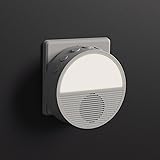A good night’s sleep is truly priceless. I once struggled with tossing and turning. My old mattress simply wasn’t cutting it. Choosing a new mattress can feel overwhelming. There are so many options available today. When people look for a new bed, two popular choices often come up. These are the memory foam and latex mattress types. Each offers distinct advantages. This guide helps you understand their differences.
The video above offers a great overview. It touches on key aspects of each mattress type. This article provides even more detail. We will explore what makes each mattress unique. This deep dive will help you decide. You can discover which mattress is best for your sleep needs.
Understanding Memory Foam Mattresses
Memory foam is a widely recognized mattress material. It gained popularity for its unique feel. This material is made from polyurethane. It reacts to body heat and pressure. Memory foam softens and contours around the sleeper.
The Feel of Memory Foam
A memory foam mattress offers a slow-moving feel. People often describe it as sleeping “in” the mattress. Your body weight is distributed evenly. This sensation creates a cradling effect. It can feel like a custom mold.
Key Benefits of Memory Foam
Many sleepers enjoy memory foam. Its benefits are quite appealing.
Excellent Pressure Relief
Pressure points can cause discomfort. Areas like shoulders and hips are common spots. Memory foam excels at relieving this pressure. It spreads your weight across the surface. This design helps to reduce strain.
Superior Motion Isolation
Couples often value motion isolation. Movement on one side of the bed is absorbed. This means less disturbance for a sleeping partner. Memory foam significantly reduces motion transfer. You can enjoy an undisturbed sleep.
Quiet Operation
Old innerspring mattresses can be noisy. Springs might creak and groan. Memory foam mattresses are inherently quiet. They do not contain noisy components. This quietness promotes a peaceful sleeping environment.
Potential Drawbacks of Memory Foam
Despite its benefits, memory foam has some cons. These are important for buyers to consider.
Heat Retention
Memory foam can trap body heat. This is a common complaint for some sleepers. The material’s dense structure can limit airflow. This may lead to warmer sleeping temperatures. Newer designs sometimes include cooling gels. These infusions aim to mitigate heat buildup.
Slower Responsiveness
Moving around on memory foam can be tricky. The material takes time to reshape. Some people describe a “stuck” feeling. This can make changing positions difficult. Mobility issues can be a concern for some.
Durability Concerns
Some memory foam mattresses may sag over time. Lower density foams are more prone to this. Cheaper options might show wear sooner. A good quality memory foam mattress offers better longevity. Checking density ratings is always advised.
Exploring Latex Mattresses
Latex mattresses offer a different experience. They are known for their responsiveness. Latex can be sourced naturally or synthetically. Natural latex comes from rubber trees. It is processed into a foam.
The Feel of Latex
Latex mattresses are distinctly bouncy. They have a responsive feel. Sleepers feel like they are sleeping “on” the mattress. The material immediately springs back. This makes movement much easier.
Key Advantages of Latex
Latex mattresses boast several strong points. They cater to different sleeper preferences.
Excellent Breathability and Cooling
Latex generally sleeps cooler than memory foam. Its open-cell structure allows air to flow. This design helps to dissipate heat. Many sleepers find latex more comfortable in warm climates. It does not trap body heat as much.
High Responsiveness and Bounce
The buoyant feel of latex is a major benefit. It allows for effortless movement. This is great for active sleepers. It is also beneficial for those with mobility concerns. You will not feel stuck in the mattress.
Exceptional Durability and Resilience
Latex is a very resilient material. It is known for its long lifespan. Latex mattresses typically resist sagging well. They maintain their shape and support for years. This makes them a wise long-term investment.
Eco-Friendly Options
Natural latex is a renewable resource. Many latex mattresses are made from natural materials. They appeal to environmentally conscious buyers. These options are often free from harsh chemicals. They offer a healthier sleep environment.
Potential Downsides of Latex
Latex also has its own set of disadvantages. These factors should be weighed carefully.
Higher Price Point
Latex mattresses can be more expensive. Their natural sourcing contributes to this cost. The durability often justifies the investment. However, the initial outlay is higher. Budget-conscious shoppers should note this.
Significant Weight
Latex is a dense material. Latex mattresses are often very heavy. Moving them can be a challenge. Installation and rotation may require assistance. This weight can be an inconvenience.
Firmness and Less Pressure Relief
Latex mattresses are generally firmer. They do not contour as deeply as memory foam. This means less immediate pressure relief for some. Side sleepers might find it less cushioning. A balanced feel is usually provided.
Choosing the Right Mattress for You
The “best” mattress is subjective. It depends on individual needs. Consider your sleeping style and preferences. Your personal circumstances play a big role.
Who Should Consider a Memory Foam Mattress?
Memory foam is ideal for specific sleepers. It offers unique comfort properties.
- **Sleepers who prefer a “sinking in” feel:** The deep contouring is very comforting. You feel cradled by the mattress.
- **Side sleepers:** The excellent pressure relief is crucial. Shoulders and hips are well-cushioned. This helps prevent pain.
- **Couples:** Its superior motion isolation prevents disturbances. Partners can move freely without waking each other.
- **Budget-conscious shoppers:** Memory foam mattresses are generally more affordable. They offer good value for money.
Who Should Consider a Latex Mattress?
Latex mattresses suit different preferences. They provide distinct support and feel.
- **Sleepers who prefer sleeping “on top” of the mattress:** The bouncy feel keeps you elevated. You won’t sink too deeply into the bed.
- **Individuals with mobility issues:** The responsiveness makes movement easy. It helps prevent a feeling of being stuck.
- **Hot sleepers:** Latex’s natural breathability promotes cooler sleep. It helps regulate body temperature effectively.
- **Those needing extra support:** Latex offers consistent support. It is often preferred by stomach sleepers or heavier individuals.
- **Long-term investors:** Its exceptional durability means a longer lifespan. Latex mattresses are a lasting choice.
- **Eco-conscious consumers:** Natural latex options are sustainable. They align with environmentally friendly values.
Common Questions About Mattress Types
Many questions arise when choosing a mattress. These answers help clarify common concerns.
Which Mattress is Better: Memory Foam or Latex?
Neither mattress type is universally “better.” Each serves different purposes. Memory foam offers deep contouring and pressure relief. It excels for side sleepers and couples. Latex provides bounce, support, and coolness. It is ideal for active sleepers and those needing firm support. Your comfort preferences are most important.
Is Latex Firmer Than Memory Foam?
Generally, latex mattresses are firmer. Memory foam typically offers a softer, more conforming feel. Some high-density memory foams can be quite firm. However, the inherent nature of latex is more resilient. This resilience translates to a firmer surface feel.
Which is Better for Back Pain: Memory Foam or Latex?
No single mattress type is superior for back pain. The key is finding the right firmness level. A medium-firm mattress is often recommended. This offers a balance of comfort and support. Both memory foam and latex can be found in various firmness levels. It is important to try different options. Choose what supports your spine best.
Which Sleeps Cooler: Memory Foam or Latex?
Latex mattresses generally sleep cooler. Their open-cell structure allows for better airflow. Memory foam can trap heat more easily. Some memory foam options now include cooling technologies. These might involve gel infusions or graphite. Despite these additions, latex typically maintains a cooler sleep surface. This makes latex a great option for hot sleepers who prioritize a cool sleeping environment.
This extensive guide should help you. It clarifies the pros and cons of both memory foam vs. latex mattresses. Consider your sleep habits carefully. Think about your personal comfort preferences. This will guide you to the perfect mattress choice. A good mattress is an investment. It truly enhances your sleep quality.








